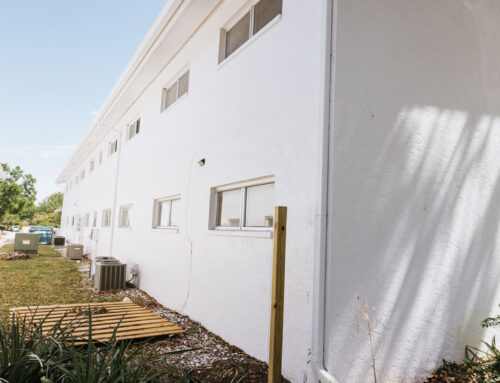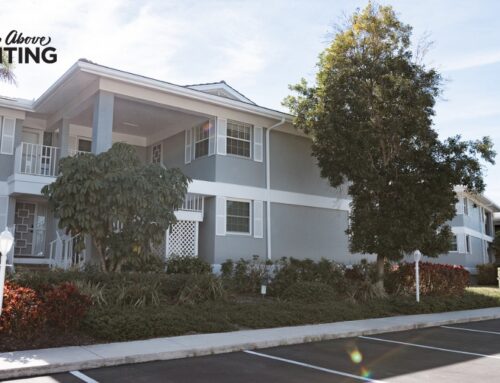Can colors really impact productivity? Numerous studies suggest they can, influencing moods and even work efficiency. The psychology of color is an intriguing factor many businesses consider when designing their workspaces. The right hues can invigorate performance, enhance creativity, and even calm the nerves. For instance, blue is often linked to stability and focus, making it a preferred choice for office environments where concentration is key. Green, with its natural associations, can promote a sense of balance, which is particularly beneficial in high-stress settings. On the other hand, yellow can stimulate innovation and new ideas, though too much of it might trigger anxiety. Understanding these nuances can help transform a typical work area into a vibrant, effective space. By carefully selecting the right shades, businesses can not only create an inviting atmosphere but also optimize their teams’ productivity.
Colors that Boost Work Productivity
Color can impact emotions and behaviors, making it a valuable tool in workspace design. Business owners might surprise themselves by how much their choice of wall color affects productivity. Let’s explore how specific colors can enhance focus, creativity, and energy in office environments.
Blue is often linked to calmness and focus. Its soothing properties help lower stress levels, making it ideal for spaces where concentration is necessary. Consider painting the walls of meeting rooms or quiet zones a soft blue to foster an environment conducive to clear thinking and problem-solving.
Green, reminiscent of nature, is another color known for its calming effect. It’s versatile and can promote balance, making it suitable for high-pressure environments. Green can also minimize eye strain, which is particularly beneficial in spaces where occupants spend significant time in front of screens.
Yellow is often associated with energy and optimism. Light yellow tones can boost creativity and encourage open communication, making it a strong choice for brainstorming areas and collaborative spaces. Its vibrant nature stimulates spirit and energy, but overuse might cause Anxiety. Employ yellow sparingly or in combination with more subdued colors to maintain a balanced environment.
Red embodies energy and action, which can be excellent for spaces necessitating physical activity or quick decision-making. Red’s intensity can boost heart rates and invigorate staff, motivating them into action. However, its powerful influence could also elevate stress levels if used excessively. Apply red in moderation or incorporate it through accents such as furniture or artwork.
The neutrality of gray can foster a sense of balance in a workspace. While it lacks the emotional impact of more vibrant colors, gray provides a stabilizing backdrop that allows brighter hues to stand out. It’s ideal for modern workspaces seeking a sophisticated edge without overwhelming employees. Consider pairing gray with warmer tones to avoid an overly clinical feel.
By understanding how colors affect mood and behavior, businesses can strategically choose paint to create productive environments tailored to their particular industry and work culture.
Relaxing Hues for Better Focus
Colors can significantly influence mood, concentration, and productivity. Understanding which hues foster a conducive environment for focus can be beneficial. In both residential and commercial spaces, specific hues have proven effective at promoting relaxation and enabling better concentration.
Soft blues are frequently favored for their calming effect. Known to lower blood pressure and heart rate, these shades can create a tranquil atmosphere essential for maintaining focus. Imagine a home office painted in a gentle sky blue—this can reduce distractions and increase productivity by providing a soothing backdrop.
Greens, particularly in muted tones, bridge the gap between calm and alertness. This color, associated with nature, can evoke feelings of restfulness, making it ideal for environments needing long-term concentration, such as libraries or studios. Incorporating green accents, either through paint or decor, can subtly enhance a room’s ambiance without overwhelming it.
Lighter shades of grey offer a neutral backdrop that minimizes visual noise, ensuring there’s nothing to detract from the task. This color pairs well with bolder accents and is versatile in various settings, supporting focus by providing a balanced foundation.
Pastel hues—think soft pinks or lavenders—can also instill serenity without sacrificing alertness. These colors introduce warmth without intensity. In creative spaces, they inspire while keeping overstimulation at bay.
To harness these relaxing hues, businesses can repaint walls or introduce accessories like curtains, cushions, or artwork. The aim is to create harmony, so consider repainting in these soothing shades for optimal environmental support. Paint quality matters as well; low-emission, high-quality paints enhance air quality, supporting a healthier workspace.
Choosing the right palette involves more than just personal preference. It is about crafting an environment where colors subtly work to your advantage, settling the mind even when tasks are taxing. Whether it’s an office renovation or a home makeover, the right color choice can transform how a space serves its purpose.
Optimizing Mood with Office Color Choice
Color has a profound impact on mood, and choosing the right tones for an office environment can significantly influence productivity, creativity, and overall well-being. When selecting colors for an office, it’s essential to consider both the type of work being performed and the emotions you wish to evoke.
Blue is a popular choice for offices, often associated with calmness and focus. It can help employees concentrate better, which is ideal for tasks requiring great attention to detail. For spaces where creative endeavors take place, infusing blue with green can add a touch of balance and innovation. Green brings a hint of freshness and is said to reduce anxiety and eye strain from prolonged computer use.
In contrast, yellow can inspire optimism and energy, making it suitable for areas where brainstorming happens. However, too much yellow may cause irritation or distraction, so balance it with neutral tones to soften its intensity.
Meanwhile, red tends to stimulate and energize, perfect for places that involve physical activity or dynamic discussions. Red, however, should be used sparingly, as its vibrancy could become overwhelming quickly.
If you’re aiming to maintain a serene environment, neutral tones like beige, gray, or off-white can provide a simple backdrop that allows other accent colors to shine. These hues can also make an office feel more spacious and can easily be accessorized with furniture and artwork to add personality.
It’s also important to consider lighting, both natural and artificial. Colors look different under varied lighting conditions, so test samples during different times of the day before committing. Considering these factors not only enhances the visual appeal of the workspace but also supports a more productive and pleasant atmosphere.
Next Steps
Incorporating thoughtful color choices into home office design can have a notable impact on productivity and well-being. As explored, colors like blue, green, and muted pastels not only create a tranquil atmosphere but also enhance focus and creativity. These hues facilitate a harmonious environment that supports the demands of modern work-from-home settings. The key lies in carefully selecting colors that align with your work’s nature and conducive spaces. Quality materials and proper application are just as crucial in achieving a refined finish that stands the test of time.
If you’re seeking to transform your home office or business space with color that resonates with function and style, A Step Above Painting offers tailored solutions. We blend expertise with an understanding of color psychology to help you create environments that truly work for you. Contact us today for a free consultation or quote—your ideal workspace is just a brushstroke away.






